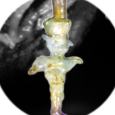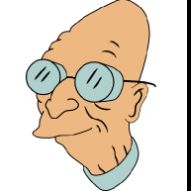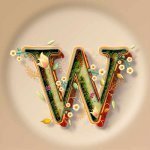-
Posts
3,535 -
Joined
-
Last visited
Reputation Activity
-
 John Rostron reacted to Pšenda in Does the affinity program not support the Smart Objects feature?
John Rostron reacted to Pšenda in Does the affinity program not support the Smart Objects feature?
If Smart Objects are converted to bitmaps during import, their format and function must be well known. Then the justification for undocumenting them is at least questionable.
-
 John Rostron got a reaction from Alfred in Does the affinity program not support the Smart Objects feature?
John Rostron got a reaction from Alfred in Does the affinity program not support the Smart Objects feature?
You will find that 'Smart Objects' covers several different features/processes. For some of these Affinity Photo does offer an alternative way of achieving the same goal. However, as @Alfred says Photo will not be able to open existing Smart Objects until such time as Adobe publishes the specification (or pigs start to fly). At present, Smart Objects just get rasterised/flattened.
John
-
 John Rostron reacted to Ej2019 in New guy
John Rostron reacted to Ej2019 in New guy
Thanks for looking
I took some online courses and now I'm doing things with old and new images. Can you get great B&W prints? mine turn out B& reddish. I'm using color monkey for balance.
-
 John Rostron reacted to Belmont in Improvements for procedural texture
John Rostron reacted to Belmont in Improvements for procedural texture
I'd like to make some suggestions for making the creation and use of the procedural texture filter a lot easier.
Allow the formula to be created in a text area, not just a single line. Making this area collapsible would be great so you could hide it if desired Instead of having to use the RGBA buttons to target a channel, just make those global variables. Then from any equation, if you set R = some value, it would affect the red channel. Documentation There really needs to be more documentation. Not just a list of functions but what those functions do and possibly an example of what they might be used for. Not teaching mathematics but at least giving the idea of what a function does. There is mention that you can't use a variable name that clashes with established function names but there isn't a list of all the function names. Yes, there are the functions like smoothstep, vec3, abs, etc. But it also says you can't use w but we aren't told clearly what w stands for. I know it is width but there is also h which is height and that isn't mentioned anywhere. And then there is rx and ry which are very important but never clearly defined. Having all these clearly defined with an explanation of how they are used is a must. And when would you use x and when would you use rx? I know some of these answers by trial and error but more straightforward documentation would be very helpful. Range inputs It would be really nice to have input ranges instead of just 0-1 and -1 to 1. Without this you have to put scaling variables in the equation which just makes things messy and difficult to read and control. Letting the user define they want the slider to be a real number slider between 1 and 100 (or whatever other range or number types) would be wonderful. Errors It would be really helpful for the system to highlight where the error is instead of just not applying the filter. This would make it easy to find an error quickly especially if it is just a simple error (missing a ; or putting in " instead of ', etc) That's it for now. It's really fun to play with the procedural texture feature but frustrating at the same time. Through trial and error I've been able to make some interesting things but it is very slow going partly because of the above issues and partly because my math education stopped in high school...
-
 John Rostron reacted to Amotilos in Super Resolution
John Rostron reacted to Amotilos in Super Resolution
So this is the result of using Affinity Photo. A massive reduction in colour noise, and with it, a jump in resolution. So, for ISO 1600 files shot in the dark, yes, it's a worthwhile technique.
What I did:
1) Imported all the 8 RW2 files into AF
2) Just pressed "Develop"
3) Pressed EXPORT as TIFF 16 bit colour and changed size in export options box to 2x in both dimensions, and chose "nearest neighbour"
4) Chose IMPORT stack, just a normal stack, with align
4) EXPORTed a 97% jpeg in normal size as the final result.
Hope this may inspire someone. I'll be trying out ISO 100 on a sunny day with the lens stopped down to f8.0 next... :-)
-

-
 John Rostron got a reaction from R C-R in A couple of questions
John Rostron got a reaction from R C-R in A couple of questions
@Renee_G
If you are using File > Export, then the dialog box will tell you the estimated file size. As you change the jpeg quality, the filesize will change.
John
-
 John Rostron reacted to johnnyfive in Measuring and Line Length
John Rostron reacted to johnnyfive in Measuring and Line Length
Thanks for the reply John!
I require these measurements similar to the OP. Which means we need to see accurate measurements as we adjust many complex paths on the screen. So the 4 steps you mention above would turn into a high multiple of 4 as we design, export, script, adjust, export, script, adjust etc...
I didn't mean to make too much work for anyone. I just assumed(maybe incorrectly) the software needs to do these calculations in its code anyway. So would it be too difficult to display these measurements to us in the GUI like AI does?
Thanks
-
 John Rostron reacted to MmmMaarten in The History Of Interactive Computer Graphics and Animations
John Rostron reacted to MmmMaarten in The History Of Interactive Computer Graphics and Animations
Interested in computers, graphics, animations, games, vr, interactives and internet?
Computer graphics, animations and interactions are now self-evident. You just have to pick up your smartphone, tablet, desktop computer or what else and you feel intuitively when you have to swipe, click, drag or pinch zoom. You also expect nothing less than nice interfaces with smooth animations. But it wasn't always like this...
There were times where there were no editors like Photo and Designer, nor Illustrator, nor Photoshop, and even computers and animations of frames didn't exist...
I wrote a blog series of six where I like to take you on a journey through time with our focus on learning about the development before and during the creation of computers, digital graphics, animations, graphical interfaces, graphics software, interactivity, 3D, a pinch of the first games, the creation of the internet and a touch of virtual reality.
I have made more than 110 illustrations for this series with Affinity Designer and also provide each part with at least one interactive to bring the events alive as good as possible for you.
Part 1 is out there now! Hope you like it and I'm sure you learn something new from it and be surprised by some events! There will be a new part every month from now. Enjoy!
English: History Interactive Computer Graphics - Part 1
Dutch: Geschiedenis Interactieve Computergraphics - Deel 1
-
 John Rostron reacted to thomaso in Focal points how to find in AP?
John Rostron reacted to thomaso in Focal points how to find in AP?
I think that would not work, because it is rather a layer than a point. Also, you might have manually fixed the autofocus to a specific image spot and then, with holding this focus, moved the camera slightly for a different motive section.
In a camera you may have options for Auto-Focus, for instance 1 point in the center, 6 points around center, etc.. This setting can be saved with a RAW and is something looking like this:
-
 John Rostron reacted to R C-R in Focal points how to find in AP?
John Rostron reacted to R C-R in Focal points how to find in AP?
RAW format files can include a huge amount of embedded metadata about each shot, including metering mode, focal point(s), & sometimes even the compass direction the camera was facing & its elevation above sea level if it is GPS enabled. Whether that metadata is included in the file, is accurate, & is in a format that can be decoded & used by Affinity Photo is a different matter entirely.
-
 John Rostron reacted to v_kyr in Edit 'W' for all curves without having to select individually or group and skew the transform?
John Rostron reacted to v_kyr in Edit 'W' for all curves without having to select individually or group and skew the transform?
Swift (programming language) - Wikipedia Apple dev Swift Swift.org Swift for Windows ... and so on ... You can use any better programming language for these things! - Once upon a time the first prog language I've learned was Algol/Pascal, next C/C++, then went the main OO route with Smalltalk, Obj-C, CLOS/Lisp, Eiffel (during academic OO software engineering). In the recent past and so lately Java, C# and Swift. - Beside this named order, I also spend time with scripting tools/langagues for hacking OS related tasks (Unix related the obvious oldies Awk, sed, grep, Perl etc.), which all nowadays have mostly been commonly replaced by Python.
No need to say, that I've forgotten to code in some of the above named programming languages once learned, since as always time goes by, the market priorities do change and thus other major players do dominate nowadays the working field.
-
 John Rostron got a reaction from v_kyr in Edit 'W' for all curves without having to select individually or group and skew the transform?
John Rostron got a reaction from v_kyr in Edit 'W' for all curves without having to select individually or group and skew the transform?
-@GreenGirl and @v_kyr. An interesting commentary from each of you. I have never heard of Swift until this thread. I would concede that if I needed to create this from scratch, I would probably written it in Python or Ruby, probably following much the same structure as you have done.
I can also support @firstdefencesdescription of @GreenGirl as tenacious!
John
-
 John Rostron reacted to GreenGirl in Edit 'W' for all curves without having to select individually or group and skew the transform?
John Rostron reacted to GreenGirl in Edit 'W' for all curves without having to select individually or group and skew the transform?
@John Rostron Actually, as someone who started this whole thing, I can most assuredly say, that considering this isn't just about drawing 'tick' marks, but also placing specific text at specific radii in relation to specific ticks, rotating and offsetting each rule in relation to others by exact and specific amounts to produce specific calculation abilities and that the text to be displayed is a semi-complex subset of the numbers belonging to every tick, that having tried drawing manually, doing spreadsheets, and now written a Swift app to generate n number of x type of rules each with their own y formula and comprising of z text requirements... once I understood how to do it in 'real' code... it's much simpler, quicker to change / edit, and much less work to add new rules / rulers and formulae to.
I know @v_kyr will say to me "I told you so..." and as I said to him "I knew you were right..." but I was trying to get the job done, and spending what ended up as 8 days getting my head around Swift code AND SVG xml syntax... it was the best decision.
Last night, a key person driving the project approached me and pointed out that there were some things needed to be added / changed. I changed a formula, I added an offset, ran the code and re-created the SVG in less time that it would have taken to have made a new spreadsheet and hacked an SVG by hand.
Thankfully what ended up taking 30 mins could easily have been hours if not longer, using the methods I had previously been using.
-
 John Rostron reacted to stokerg in My take on chapter 5 of the workbook
John Rostron reacted to stokerg in My take on chapter 5 of the workbook
Thought i'd share my take on chapter 5 from the workbook, Snow Queen.
Model photo is the stock image provided in the chapter. Graffiti photo is my own, not sure who sprayed it (local skate park and fully allowed area) but it seems to wrap around the model really well and there is a crack/chip in the surface of the wall which lines up with the hair line of the model so well. I did this version on my iMac but have also repeated the same process on the iPad version of Photo. I did try a full black and white version, but didn't think it suited the image.
Attached for those who are interested is very low res version of the graffiti shot used, If anyone wants the full res version to play around with just ask and i'll upload it.
-
 John Rostron reacted to emmrecs01 in before/after
John Rostron reacted to emmrecs01 in before/after
Same for me; the History slider is invaluable for this.
Jeff
-

-
 John Rostron got a reaction from Wosven in Edit 'W' for all curves without having to select individually or group and skew the transform?
John Rostron got a reaction from Wosven in Edit 'W' for all curves without having to select individually or group and skew the transform?
@GreenGirl Although you have solved your problem, I thought I would give you my final solution using a Spreadsheet..
I generated a label "tick1", "tick2" or "tick3" based on the decimals in the angle. The angle is in column C, the decimal portion in column D and the tick label in column D. I get column D using the formula: =C7-FLOOR(C7,1). From this I get the tick label using the formula: =IF(D7=0,"tick1",IF(D7=0.5,"tick2","tick3")).
I then generate the use directive by concatenating the various fragments using the formula: =J$3&E7&J$4&G7&J$5.
The three common components are in J3, J4 and J5. This image shows them being calculated:
For inserting two elements, I found that concatenation was more convenient than using the SUBSTITUTE function.
I copied the use directives from the spreadsheet into an svg file containing three lines as follows:
<g id="tick1" >
<line x1="1024" y1="1800" x2="1024" y2="2000" style="stroke: black; stroke-width: 3pt" />
</g>
<g id="tick2" >
<line x1="1024" y1="1800" x2="1024" y2="1950" style="stroke: black; stroke-width: 2.5pt" />
</g>
<g id="tick3" >
<line x1="1024" y1="1800" x2="1024" y2="1900" style="stroke: black; stroke-width: 2pt" />
</g>
Here is the final result.
John
-
 John Rostron got a reaction from v_kyr in Edit 'W' for all curves without having to select individually or group and skew the transform?
John Rostron got a reaction from v_kyr in Edit 'W' for all curves without having to select individually or group and skew the transform?
@GreenGirl Although you have solved your problem, I thought I would give you my final solution using a Spreadsheet..
I generated a label "tick1", "tick2" or "tick3" based on the decimals in the angle. The angle is in column C, the decimal portion in column D and the tick label in column D. I get column D using the formula: =C7-FLOOR(C7,1). From this I get the tick label using the formula: =IF(D7=0,"tick1",IF(D7=0.5,"tick2","tick3")).
I then generate the use directive by concatenating the various fragments using the formula: =J$3&E7&J$4&G7&J$5.
The three common components are in J3, J4 and J5. This image shows them being calculated:
For inserting two elements, I found that concatenation was more convenient than using the SUBSTITUTE function.
I copied the use directives from the spreadsheet into an svg file containing three lines as follows:
<g id="tick1" >
<line x1="1024" y1="1800" x2="1024" y2="2000" style="stroke: black; stroke-width: 3pt" />
</g>
<g id="tick2" >
<line x1="1024" y1="1800" x2="1024" y2="1950" style="stroke: black; stroke-width: 2.5pt" />
</g>
<g id="tick3" >
<line x1="1024" y1="1800" x2="1024" y2="1900" style="stroke: black; stroke-width: 2pt" />
</g>
Here is the final result.
John
-
 John Rostron reacted to firstdefence in Edit 'W' for all curves without having to select individually or group and skew the transform?
John Rostron reacted to firstdefence in Edit 'W' for all curves without having to select individually or group and skew the transform?
Well done GreenGirl aka "Tenacious G", and amazing support from @John Rostron and @v_kyr
-
 John Rostron reacted to GreenGirl in Edit 'W' for all curves without having to select individually or group and skew the transform?
John Rostron reacted to GreenGirl in Edit 'W' for all curves without having to select individually or group and skew the transform?
Finally... all 5 rules complete... first circular slide rule complete. Swift program taking inputs spits out the SVG that I can import back into Designer and colour / texture as I need.
Thanks to everyone over two threads who helped with this; special shout outs to @John Rostron and @v_kyr
Very disappointing that Designer couldn't have working SVG support and some of the buttons / functions in Designer don't work as advertised... but it's done. 1 down, 4 more to go!
-
 John Rostron got a reaction from GreenGirl in Edit 'W' for all curves without having to select individually or group and skew the transform?
John Rostron got a reaction from GreenGirl in Edit 'W' for all curves without having to select individually or group and skew the transform?
I have been doing as I suggested, using a spreadsheet, as above and am almost there.I hope to post a semi-finished version later today.
John
-
 John Rostron reacted to Sean P in Exporting to SVG forgets bounding box reset
John Rostron reacted to Sean P in Exporting to SVG forgets bounding box reset
Hi John,
The reset is not a permanent one, you can see this in the application by deselecting and reselecting the object. It is intended as a way to reset the bounding box if you need to move in X/Y direction relative to the page.
-
 John Rostron reacted to stokerg in Full Image Not Displayed
John Rostron reacted to stokerg in Full Image Not Displayed
Hi ElBeardo,
As @John Rostron explained in the thread he linked to. Different RAW engines do handle RAW files differently. However, with Affinity, you should actually see a bit more to the image as we don't discard the edge data, which is why your RAW file opens at 6744 x 4502 and not 6720 x 4480. So really you should see more of the image, not less. Could you attach a RAW file or let me know what model Canon camera you have and i can then do a quick test
-
 John Rostron reacted to GreenGirl in Edit 'W' for all curves without having to select individually or group and skew the transform?
John Rostron reacted to GreenGirl in Edit 'W' for all curves without having to select individually or group and skew the transform?
@John Rostron You mean do it 3 more times and composite them? The point is that, let's say every whole number needs a long length, every 0.5 needs a shorter length and every .01 or 0.2 (depending on where in the arc you are) needs an even shorter length... so that's 4 times I need to edit the SVG.. sure, I suppose I could go back into the spreadsheet and hack out the numbers, so that I end up with 4 lists, and then copy/paste into the master .svg file...
I was just hoping that there was something in Designer (or Sketch) that I could just bulk select and change all lengths without throwing in extra skews, transforms or other such nonsense.





